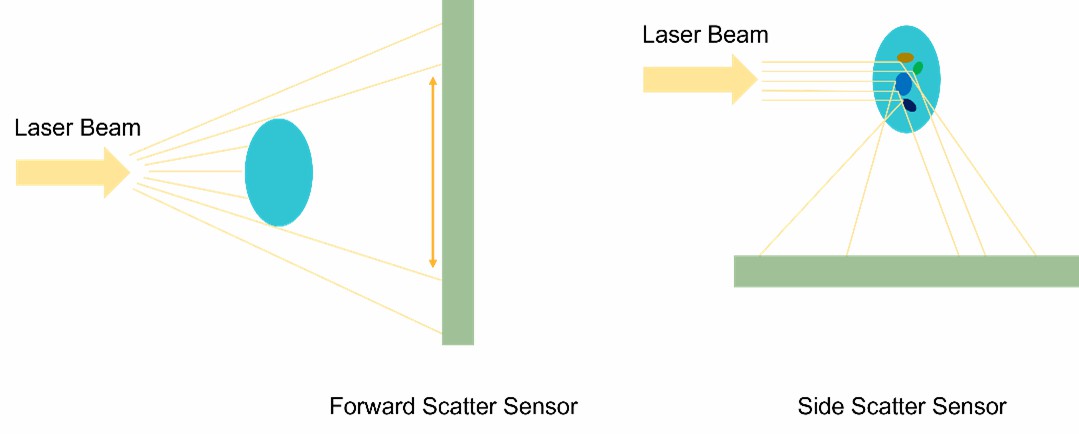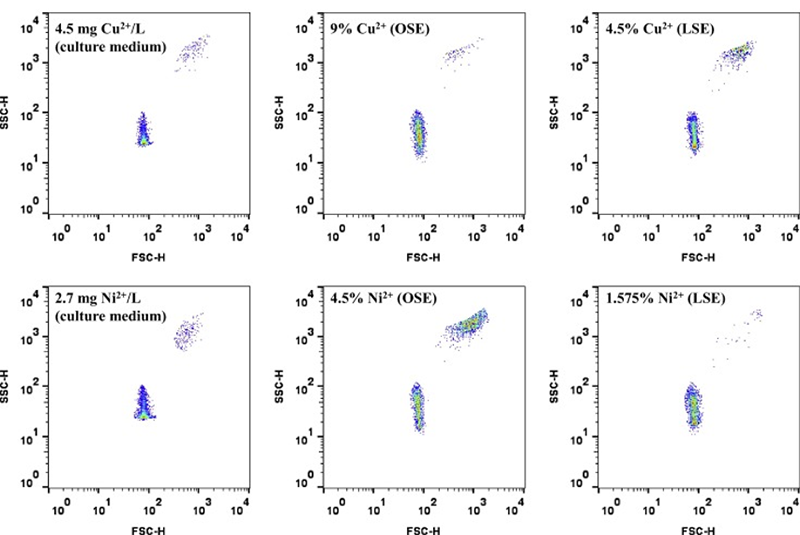Algal Cell Size and Granularity Analysis Service
The cell size and granularity of algae are two basic characteristics of algae morphology. They can be used as important parameters for algae viability and strain screening.
As a professional algae research and analysis company, Lifeasible provides professional algal cell size and granularity analysis services to help customers evaluate the status of algae.
FC for Cell Size and Granularity Measurement
Flow cytometry (FC) is a technique used to detect and measure the physical and chemical properties of a population of cells or particles. The technique entails suspending cells or particles in a liquid and analyzing them one cell at a time with a laser beam to detect their optical properties. Ultimately, this enables the rapid and high-throughput examination of thousands of cells. Finally, the collected data is processed and analyzed by a computer.
| Forward Scatter for Cell Size Measurement | Side Scatter for Granularity Measurement |
|---|---|
| When the laser beam hits the cell stream, some photons will deviate slightly from their path through light diffraction as they come into contact with the cell membrane. The forward scatter sensor is placed in line with the laser path, and on the other side of the cell stream, this "scattered" light is collected by this sensor. Due to the nature of its collection, this parameter is referred to as small-angle light scatter (SALS), forward-angle light scatter (FALS), or most commonly, forward scatter (FSC). Forward scatter is proportional to cell size. The larger the cell, the more light is scattered and the higher the detected signal. | Since cells are translucent, many photons will pass through the cytoplasm. If a photon hits an organelle, such as the ER (Endoplasmic Reticulum) and nucleus, the photon will be reflected at a greater angle than that produced by the forward scatter. In a typical flow cytometer, a second detector is placed perpendicular to the laser path, which is referred to as wide-angle light scatter (WALS), orthogonal light scatter (OLS), 90° light scatter, or commonly side scatter (SSC). Side scatter is proportional to the complexity of the cell. The more organelles within the cytoplasm, the more light scatter and the higher the detected signal. |
 Fig.1 Flow cytometry detection patterns of cell size and granularity.
Fig.1 Flow cytometry detection patterns of cell size and granularity.
Analysis of Algal Cell Size and Granularity
In order to detect the effect of metal-contaminated soil, such as Cu and Ni, on algae, the cell viability of Chlorococcum infusionum is analyzed by measuring the size and granularity of algal cells using flow cytometry.
 Fig.2 Flow cytometric density plots. (Nam, S. H., & An, Y. J., 2015, Chemosphere)
Fig.2 Flow cytometric density plots. (Nam, S. H., & An, Y. J., 2015, Chemosphere)
Our Services
Algal cell size and granularity are important indicators to evaluate the viability and survival of algal cells, which are mainly obtained by flow cytometry testing and analysis.
Advanced Flow Cytometers - As a comprehensive platform for algae analysis and research, Lifeasible has advanced flow cytometers in order to provide professional algal cell size and granularity analysis services.
Professional Data Analysis Team - We have a professional data analysis team that can undertake the acquisition, processing, and mapping of experimental data.
Why Choose Us

As a pioneer in algae research and analysis, Lifeasible has developed a professional algae-related research platform and team. We are glad to share our experience and technology about the measurement of algal cell size and granularity with you and help you with the statistical analysis. Please contact us for more information.
Reference
- Nam, S. H., & An, Y. J. (2015). Cell size and the blockage of electron transfer in photosynthesis: Proposed endpoints for algal assays and its application to soil alga Chlorococcum infusionum. Chemosphere, 128, 85-95.
Our services are for research use only and not for any clinical use.